Nuclear blasts…they’re not thought about much in modern society — at least not as much as they were a generation ago.
Thank you for reading this post, don't forget to follow and signup for notifications!
But there is and always will be the threat of a nuclear blast within the modern world.
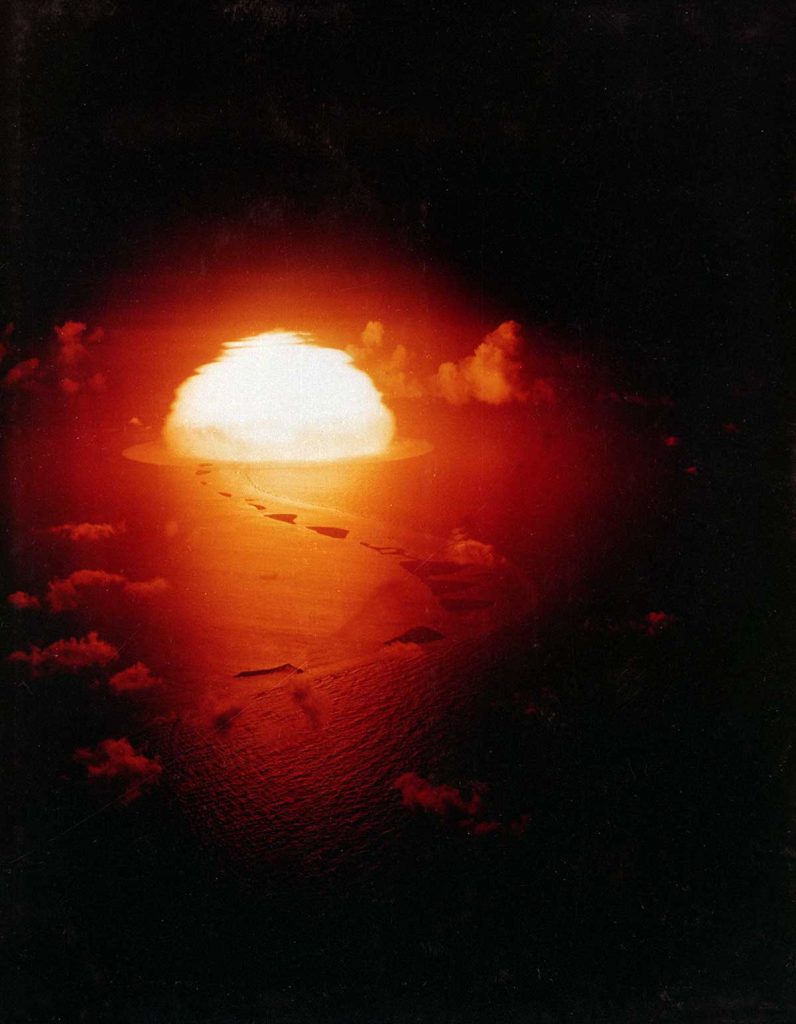
In fact, you may even be wondering…is anything you can do during a nuclear attack?
Wouldn’t you just be vaporized?
Thankfully, there are steps that you can take which will greatly enhance your chances of living through a nuclear blast. And we’re going to lay all those out for you so you can be prepared.

From what to expect in the moments after to how to prep beforehand, we gathered the top suggestions to ensure you have the best chance at survival.
But first, let’s take a look at the down and dirty of what you need to know about nukes.
Table of Contents
Loading…
How to Prepare for a Nuclear Attack…Before It Happens
As we mentioned initially, there are steps that you can take ahead of time to improve your chances of surviving a post-nuke environment.
What are they? Well, for starters:
1. Make a Bug-Out Bag
I find it interesting to note that FEMA practically advocates that all of the American public keep 24 hours’ worth of food, water, and supplies readily accessible at all times for disaster preparedness.
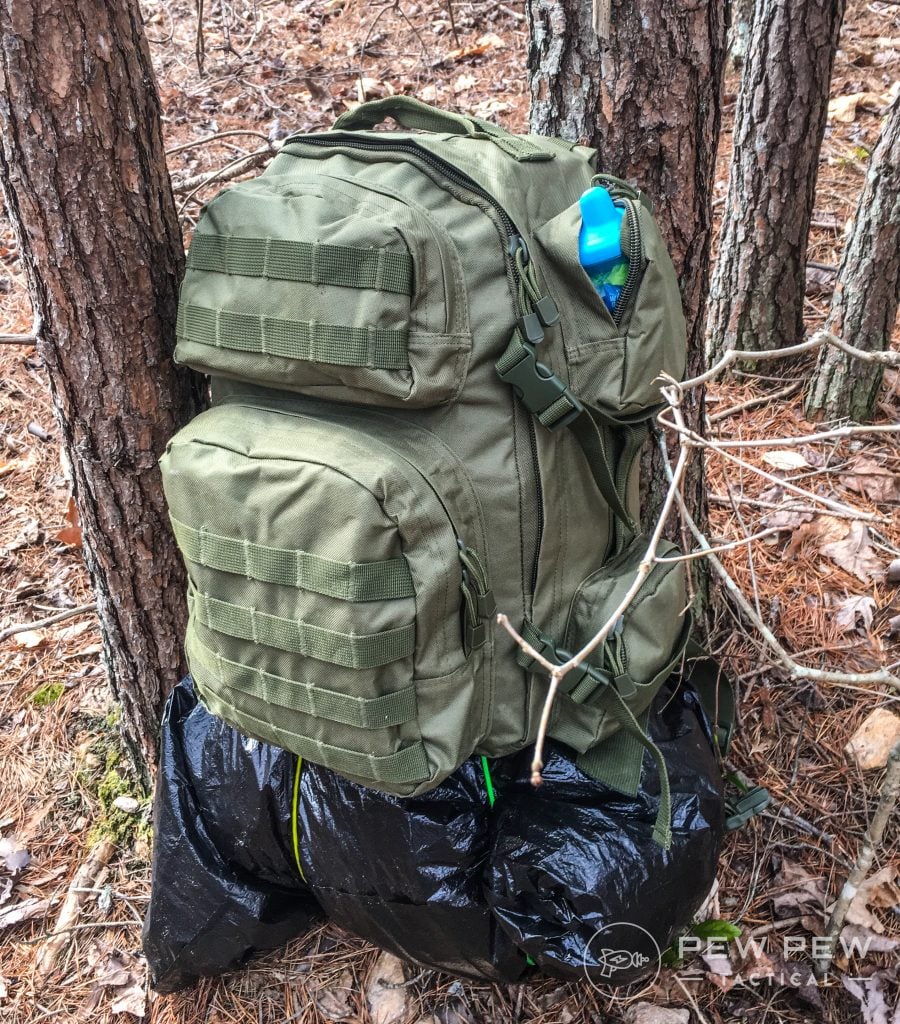
This is nothing more than government sponsorship of bug-out bags, is it not? It seems we preppers aren’t as crazy as everything initially thought we were, after all.
Keeping enough food and water on hand to last for 24 hours will not only allow you to make it through the first day of a nuclear holocaust with what you need to survive but could help you make it through a wide number of other more common scenarios (tornado, earthquake, flooding) as well.
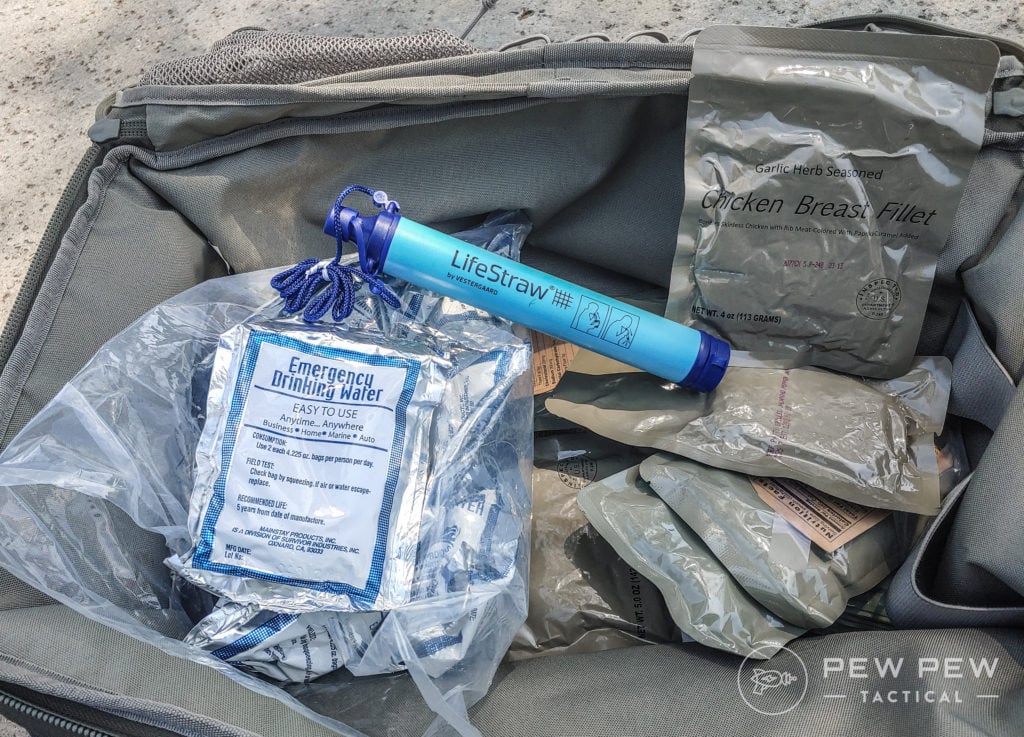
So first, make a bug-out bag. There’s simply no reason not to have one in modern society.
If you’re looking for tips on how to make your own, we’ve got some great advice on the subject.
Or, if building one seems too arduous, pick up a pre-made bug-out bag. Remember, you’ll want one that can carry you for at least 24 hours, if not longer.
Look for things like a first aid kit, tent, water purification, food, and hygiene products.
Prices accurate at time of writing
Prices accurate at time of writing
-
25% off all OAKLEY products – OAKLEY25
Copied!
Visit Merchant
Make sure to throw in some iodine pills for good measure!
These will help protect you from radiation in the days following an event.
Prices accurate at time of writing
Prices accurate at time of writing
-
25% off all OAKLEY products – OAKLEY25
Copied!
Visit Merchant
Additionally, you might want to consider tossing a gas mask in your bag as well.
Our favorite is the CM-6M from Mira Safety.
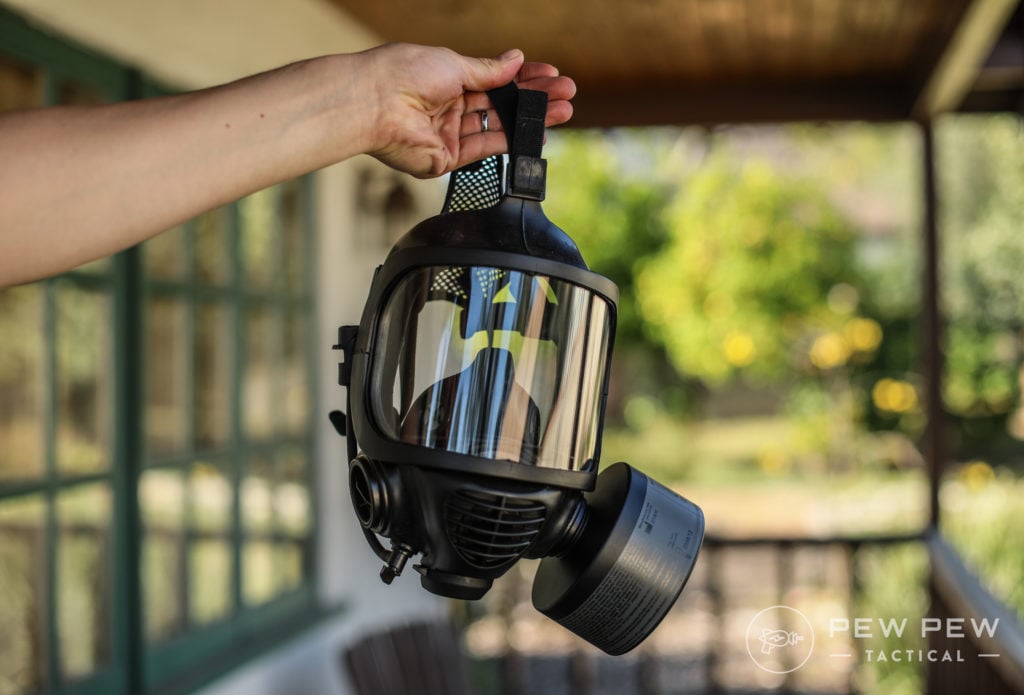
It’s CBRN-rated, meaning it can handle nuclear, biological, and chemical events a little extra radiation protection snuck in.
That “R” protects against dirty bomb isotope fallout.
Prices accurate at time of writing
Prices accurate at time of writing
-
25% off all OAKLEY products – OAKLEY25
Copied!
Visit Merchant
It uses standard filers, but you can also opt for one of Mira Safety’s own, which lasts in storage for 20 years.
To learn more about this one or shop for other gas mask options, check out our full round-up on the 12 Best Gas Masks, Face Masks, Respirators, & Filters [Hands-On].
2. Know Your Shelters
You make better decisions when you think through what you would do ahead of time. The same goes for choosing a shelter.
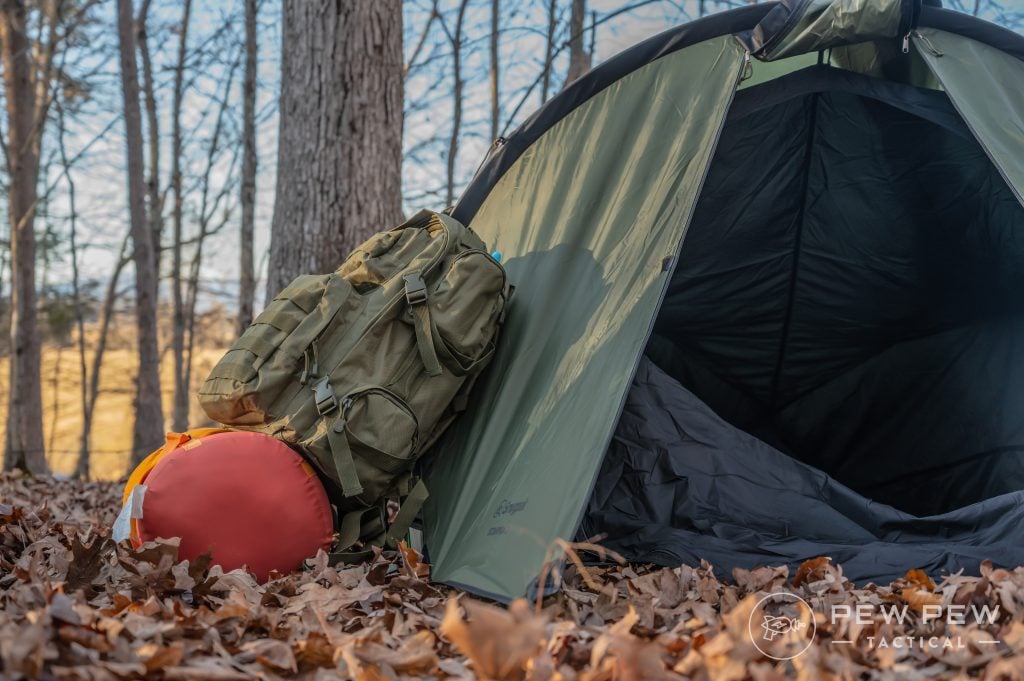
Making a mental note of good places to shelter on your route to work, the gym, or wherever is a great way to have a ready plan should you ever have to use it.
3. Stock Supplies
If you have a pre-planned location where you’re going to shelter, it makes sense to have everything already in place that your family may need to survive.
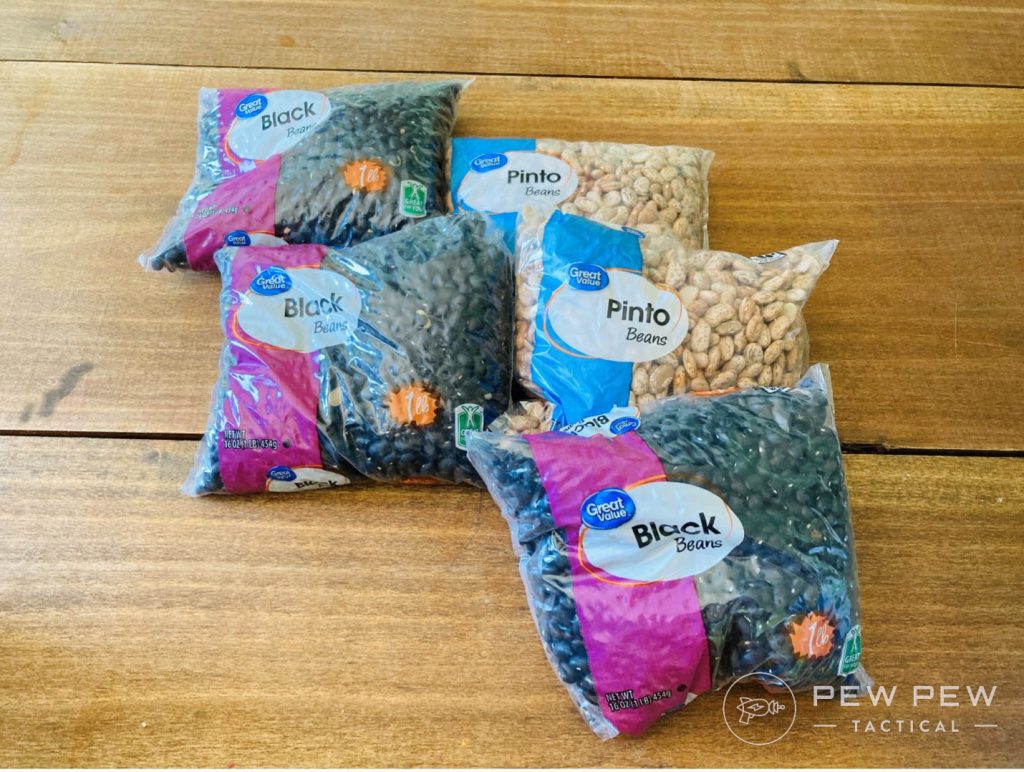
Basically, this boils down to food, water, a place to sleep, warm clothing, a bathroom, a shower, and staying clean.
If you have the necessary equipment for that, you’re golden.
Make sure to check out our guides to get you set up.
- Long Term Food Storage: Fresh Food for Survival
- 10 Best MRE Brands & Kits for Survival
- 9 Awesome Do-It-Yourself MREs
- [How To] Stockpile Food & Water for Emergencies
- Supermarket Food List: How to Prep Your Pantry for Survival
4. Consider a Geiger Counter
A Geiger counter measures fallout and alerts users when radiation levers are too high.
In the aftermath of an explosion, it might be wise to have one of these around.
Prices accurate at time of writing
Prices accurate at time of writing
-
25% off all OAKLEY products – OAKLEY25
Copied!
Visit Merchant
Nuke Inbound…
Back in 2006, the U.S. government created the Integrated Public Alert and Warning System (IPAWS), which allows them to send out emergency alerts to all Americans via their cell phone providers.
Hawaiians got a taste of this in 2018 when they all received emergency alerts on their phones that a nuclear missile was on its way. It was supposedly a mistake.
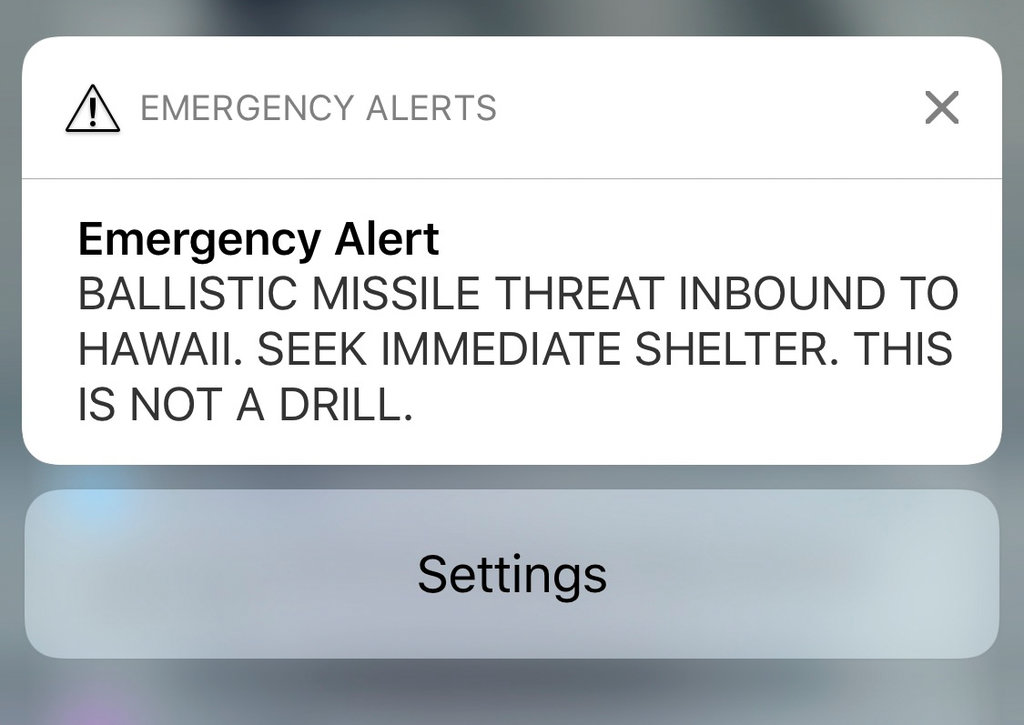
America offers one of the best early alert systems in the world.
So, there’s virtually zero chance that a nuclear missile would head our way without us knowing.
If there’s another nation sending a nuclear ICBM, you’re likely to have at least some warning.

The length of time that you’ll have varies depending on how close you are to the launch zone. For example, a North Korean nuke wouldn’t give as much warning to a Californian as it would to a Georgian.
But, regardless of where you are, you should receive some form of heads-up. Your best bet in such a situation is to seek shelter and fast.
Bad news…if your location is the intended target of the missile, you’re pretty much screwed. It’ll be only a few minutes until you’re turned to ash.

The good news is you’ll never know with any certainty exactly where the ICBM is headed. Perhaps it’s your town. Maybe it’s the town 30 minutes away. So there’s some hope.
If possible, seek shelter in the basement of a very strong building.
Large multi-story commercial buildings are likely the best. These feature incredibly strong, dense basements that may help shield you from the initial blast.
Radioactive Fallout

Assuming you made it through the blast, congratulations! That’s a big accomplishment!
You’re not in the clear yet, however.
The next thing to worry about is something called fallout — radioactive dust particles that begin falling from the sky.
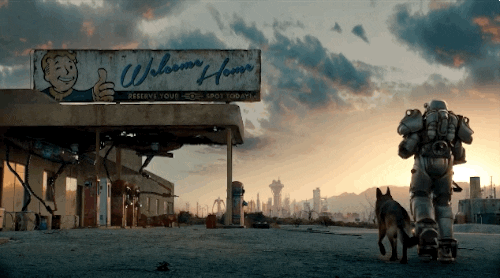
You have roughly 15 minutes before this begins to rain upon your head, so you need to do something — fast. If you don’t seek shelter, you will die from radiation poisoning. It’s not a pretty process.
All of your hair will slowly fall out in clumps. Your skin will turn an ashen gray, and you’ll be covered in burns. Not to mention you’ll feel miserable and incredibly nauseous.
The radiation levels will be at their highest for the first few hours post-blast, but thankfully, it will degrade rather rapidly. But you’ll want to stay sheltered for at least 24 hours before you think about moving elsewhere.
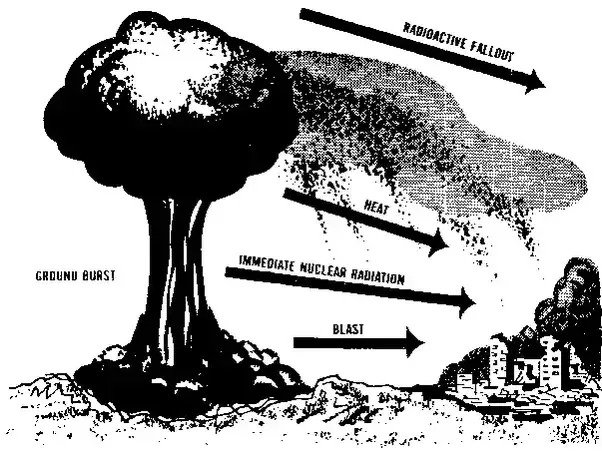
This fallout will be visible, coming in the form of large grey and black dust particles.
So, your first course of action needs to be to find somewhere safe to bunker down as quickly as possible.
Find Shelter
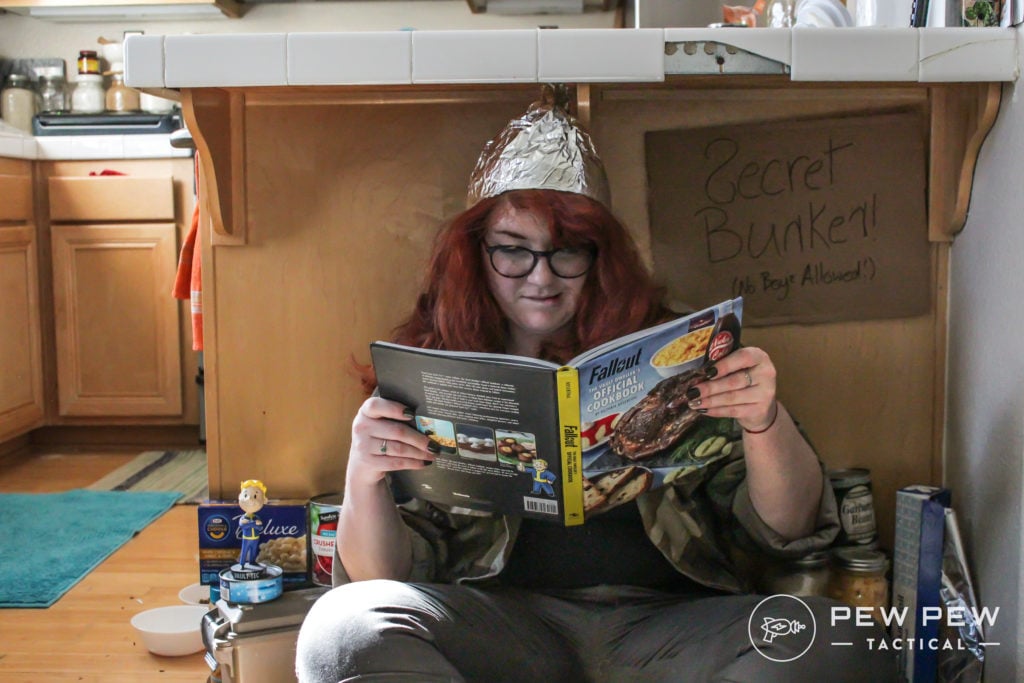
That fallout gives off radiation the entire trip back down to earth and then some.
You need a structure that will not only protect you from this radiation as it’s falling but also as it accumulates on the ground.
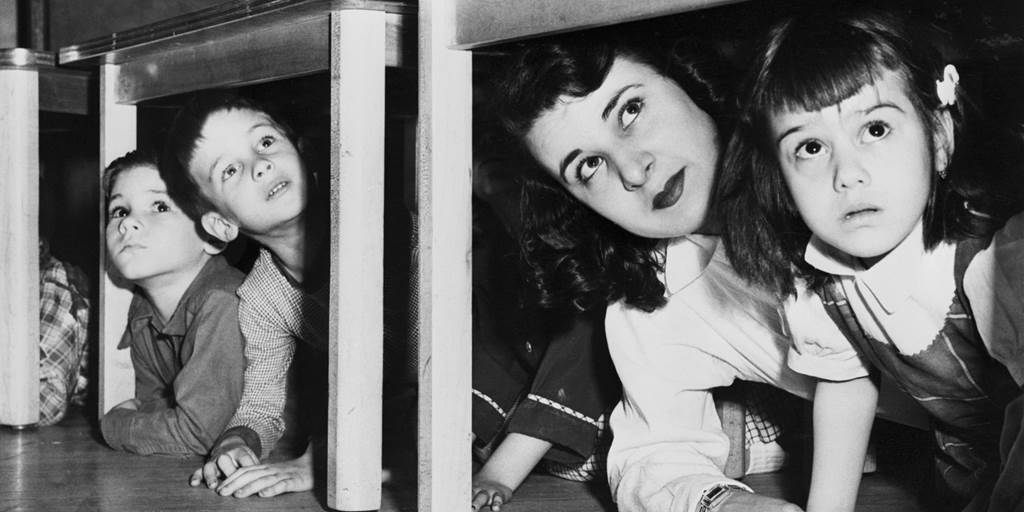
Stick-built structures (e.g., most residential homes) offer little protection.
Don’t get me wrong, they’re most certainly safer than the alternative of standing outside, but you really need to find something safer.
A brick or concrete structure will shield you much better from radiation than a sheet of plywood, and some drywall will. Typically, the larger the building and the heavier the construction material, the safer you’ll be inside it.
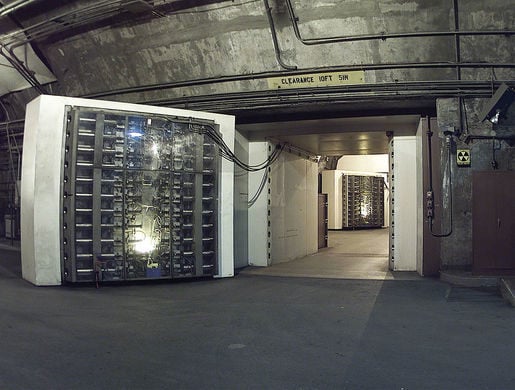
If you’re in a big commercial building, or even if you’re in a neighborhood where your only safe bet is a basement, take it.
Basements will be much safer than being on the ground floor due to the radioactive dust accumulating all around the house and giving off radiation that penetrates your walls.
Wash Up & Get Rid of Clothes
Once you finally reach shelter, you may have some fallout on you. So, you want to remove your clothing and put it far away from your shelter.
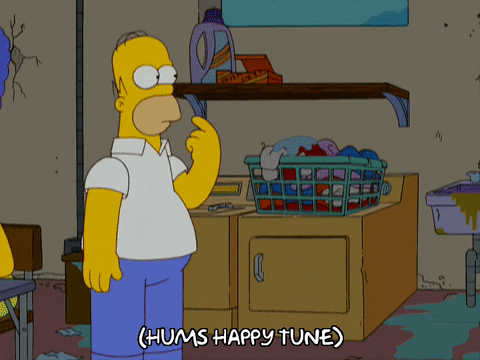
Then, wash the radiation off of your skin. A shower is the best way to do this. Provided that’s not an option, you can use a wet washcloth to clean yourself off.
Hand sanitizer won’t do a dang thing for you, so don’t even worry about it.

If, perchance, you are en route to a safe shelter when the fallout arrives, know that it is much safer to begin to brush the fallout off of your body with your hands than it is to wait until you can finally access a shower.
I understand the fear of actually touching it and just wanting to leave things be, but the longer it’s on you, the longer it can cook you.
That said, you certainly want to avoid touching your eyes, nose, or mouth at this point. You don’t want radiation inside of you.
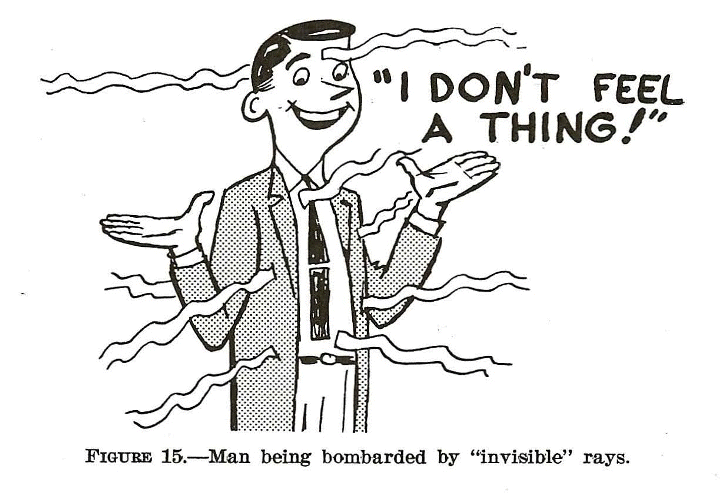
Fallout can be blown somewhere around 20 miles by upper atmospheric winds as well.
So if you live within 20 miles of the blast, you need to be aware of the possibility of fallout heading your way.
Stay Away From Outer Walls and the Roof
This makes sense.
If the whole goal of the shelter is to put as much distance between yourself and fallout as possible, then you will want to avoid these parts of a home. Even within a basement, this same principle applies.
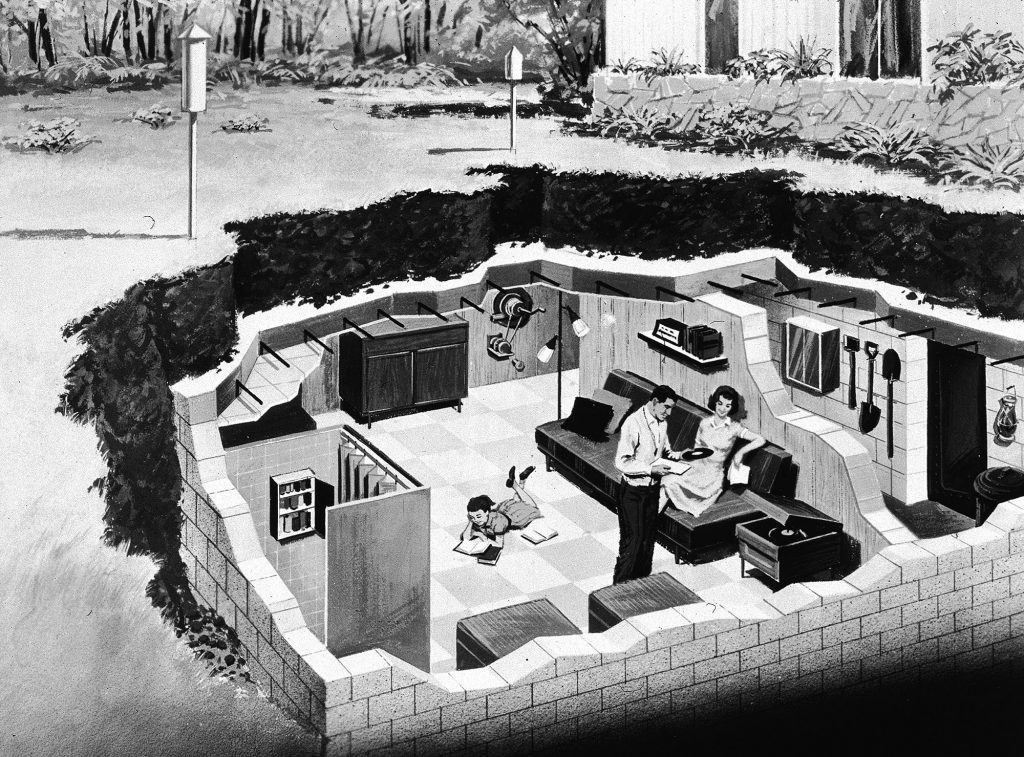
A lot of homes have basements that can be entered from the outside. If such is the case for where you’re sheltering, then you’re better served to hunker down on the side that has an earthen wall.
To be near the above-ground part of the basement in such a situation is to, in essence, be on the ground floor. As we’ve discussed above, that is bad.
Avoid cars, mobile homes, and pagodas since these offer little to no protection whatsoever from exposure, or you will quickly succumb to radiation poisoning.
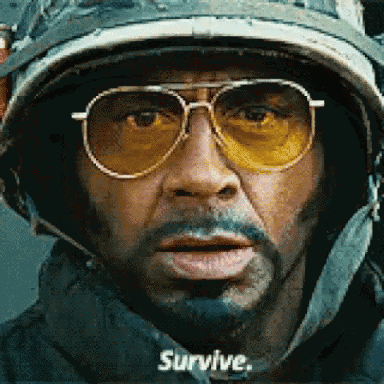
If you’d like to look at how a mushroom cloud would affect your region, there are some interesting tools you can tinker around with online at Nuke Map and Nuclear War Map.
Both of these sites allow you to map out the likely fallout patterns and blast radius of a nuke at any place on the globe and are incredibly interesting.
Post-Blast Survival & Considerations
EMP Blast
One of the lovely things about a nuke is that it generates an electromagnetic pulse when it explodes. This will fry all electronics for miles.
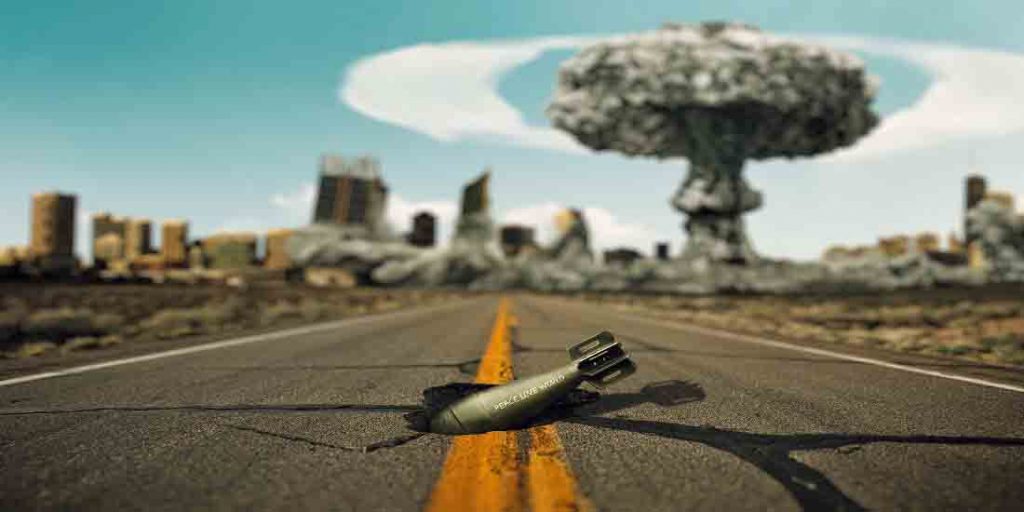
So not only will you be in a radioactive wasteland, but you won’t be able to read Pew Pew Tactical either. Insult to injury, huh?
Fires Everywhere
There’s a bit of debate on this point within the current literature on nuclear weapons. I am of the camp that there will be widespread fires post-nuke.
While most urban centers are built with steel and concrete (not combustible), there is always a threat of fire within a building.
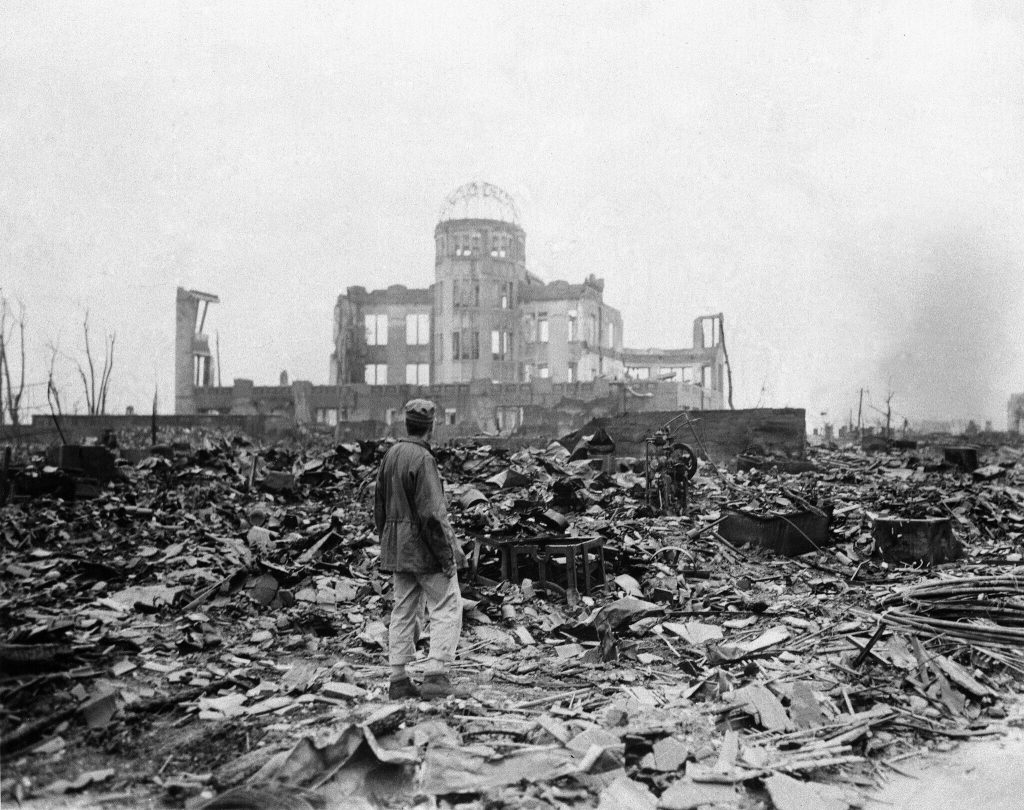
And I’m not aware of any more foolproof method to start a fire than to drop a nuclear bomb.
Widespread Glass Injuries
The initial blast and shockwave will break glass up to 10 miles away.
Anybody near glass at the time of detonation will suffer lacerations — that is, deep cuts or tears in the skin.
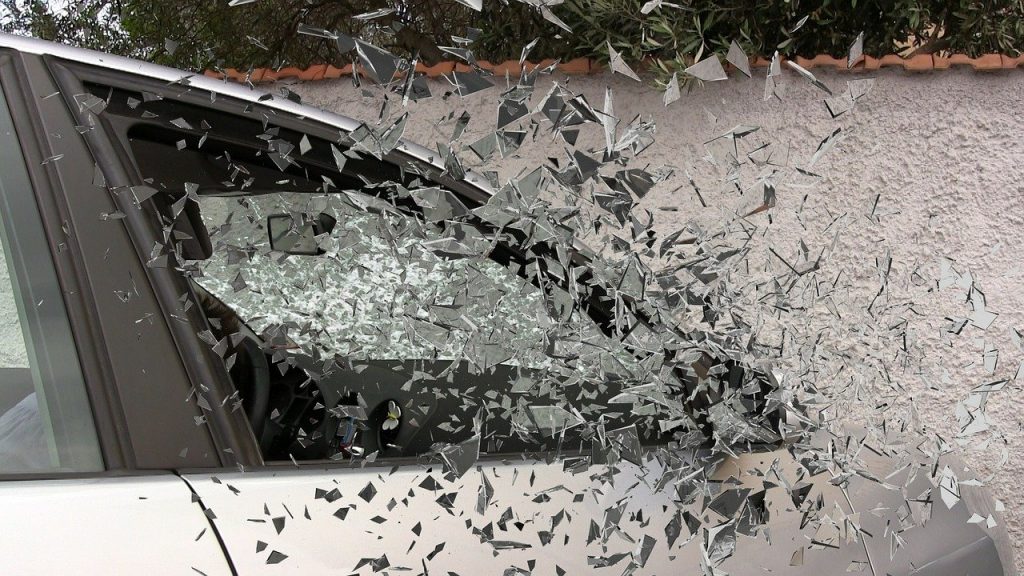
Consequentially, there are going to be a lot of people killed by glass injuries rather than radiation.
It’s because of this that you’re going to want to have some form of first aid kit on your person at all times.
Prices accurate at time of writing
Prices accurate at time of writing
-
25% off all OAKLEY products – OAKLEY25
Copied!
Visit Merchant
You may be the person shredded by glass.
It also helps to know what to do in the event of a cut, so check out our guide to the Best First Aid Classes to get trained up.
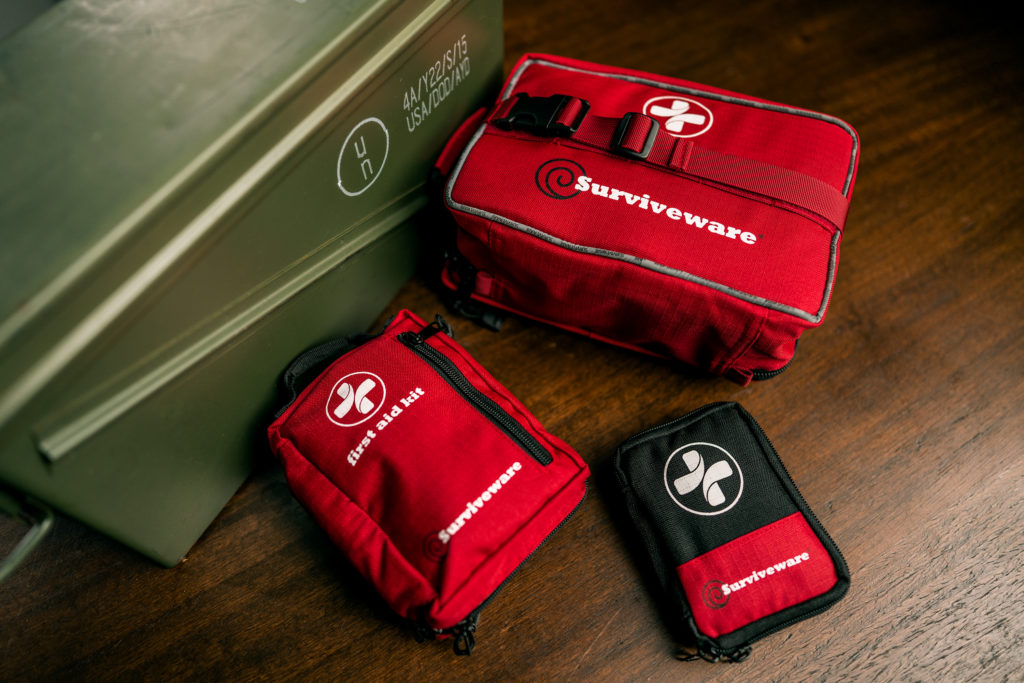
Flash Blindness
Unlike The Book of Eli or The Road, it doesn’t appear that there will be permanent blindness associated with a nuclear blast.
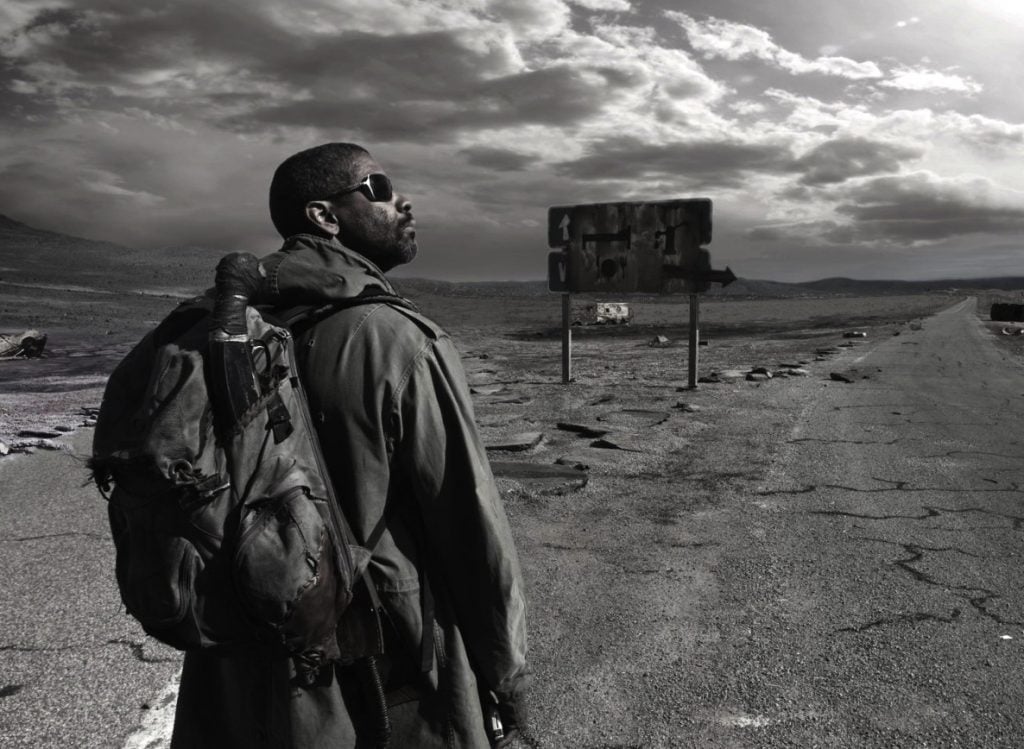
This could just be a feel-good message that the government is feeding us, but from what we’re being told, any blindness associated with a nuke should be temporary.
Most likely, people will regain their vision in less than a minute.
That said, this will cause traffic accidents. Flash blindness can hit people up to 12 miles from ground zero, and there will be planes, helicopters, trucks, cars, and buses en route when such an event occurs.
As a result, accidents will be responsible for many deaths post-blast.

There’s not really anything that you can do to prepare or avoid such — the nuke is likely going to be a surprise. But, if you know a nuke is on its way toward a city a few miles away, it would be best not to watch.
Radiation Sickness
You are very likely to come into contact with those who are victims of radiation sickness post-blast.
This will likely be those who didn’t reach shelter soon enough or ever. These people are likely to die a rather miserable death, and here’s what you need to know.
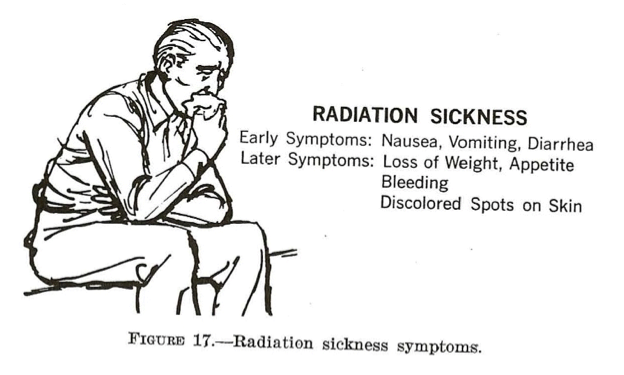
To begin with, it’s not contagious. You can’t catch radiation sickness simply by being around somebody who has it.
However, that person is likely covered in radioactive fallout. So until you can get the person clean of the fallout, you must be careful with how close you get to them.
Coming Up with a Long-Term Game Plan
So let’s say that you made it through the initial blast and into shelter before the fallout started falling.
What now?
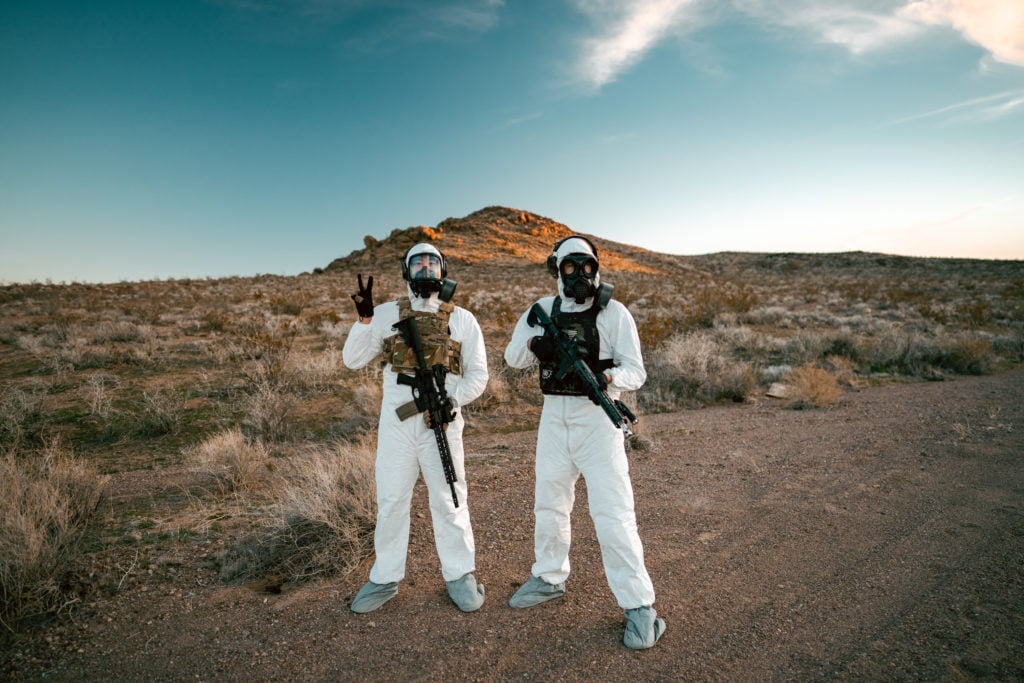
You likely have questions about food and water. Is what you have around you safe to ingest?
You certainly don’t want to eat radioactive material, but you’re not sure what is and isn’t at this point.
Provided that the food you have was inside when the blast went off, bottled water, food within a refrigerator/freezer, and sealed food should be fine to eat.
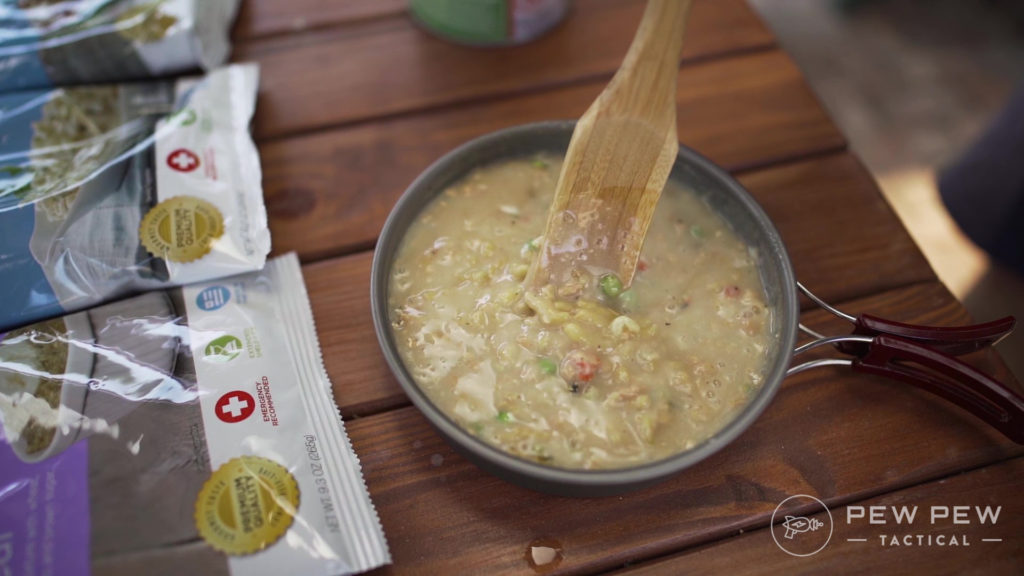
What you want to avoid is food that is or was outside.
If you stumble across a garden post-blast, eating the vegetables is a good way to end up dying from radiation poisoning a day or two later.
The same could probably be said for drinking city water.
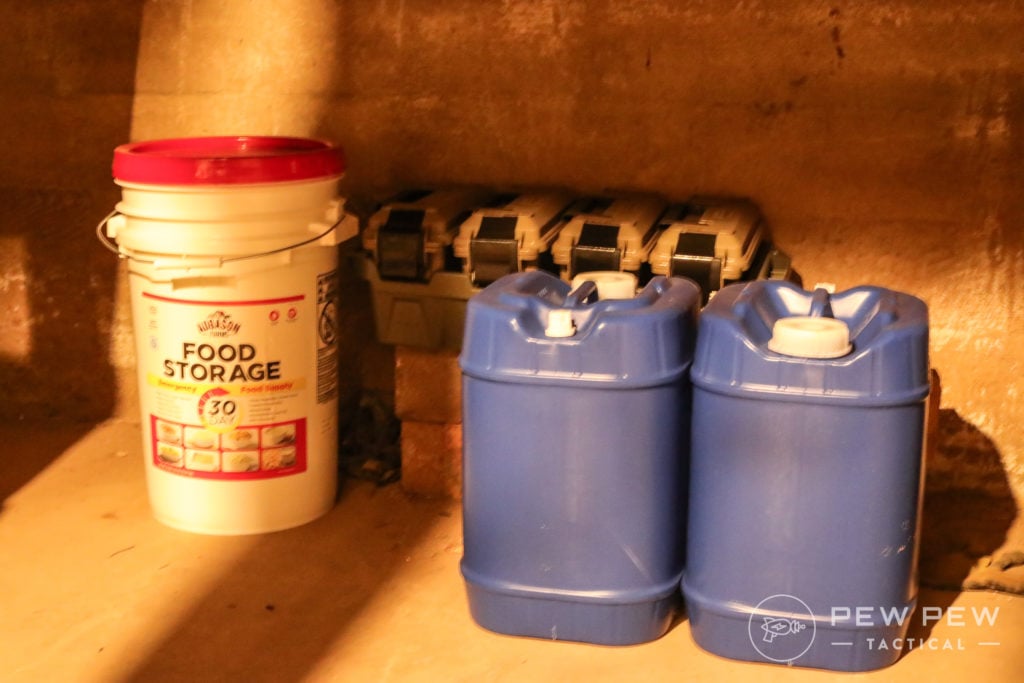
For safety’s sake, avoid anything that you don’t already have stored inside your shelter or home. It would suck to survive a nuclear blast and the initial radiation, only to die by eating contaminated food.
As far as sheltering in place goes, you’ll want to have some type of hand-crank radio available.
This will get you the information that you need to make a more informed decision regarding what you should do evacuation-wise. Without it, you’re kind of just shooting in the dark.
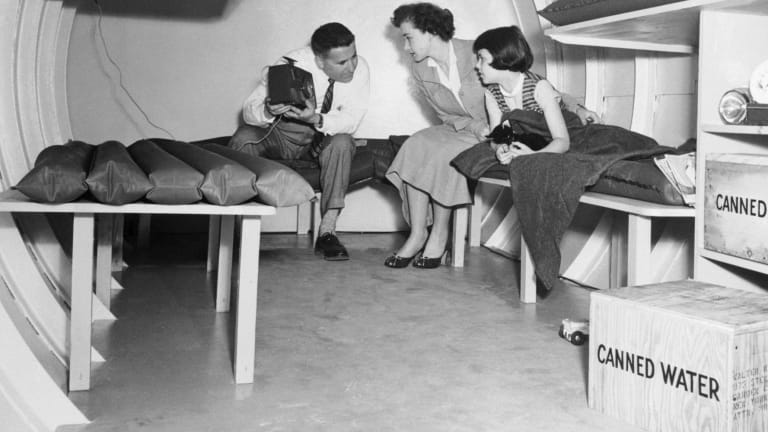
Final Thoughts
Nukes are still a threat within modern society.
Remember that essentially everything that you prep for a nuke is easily used in other disasters, with the exception of a Geiger counter.
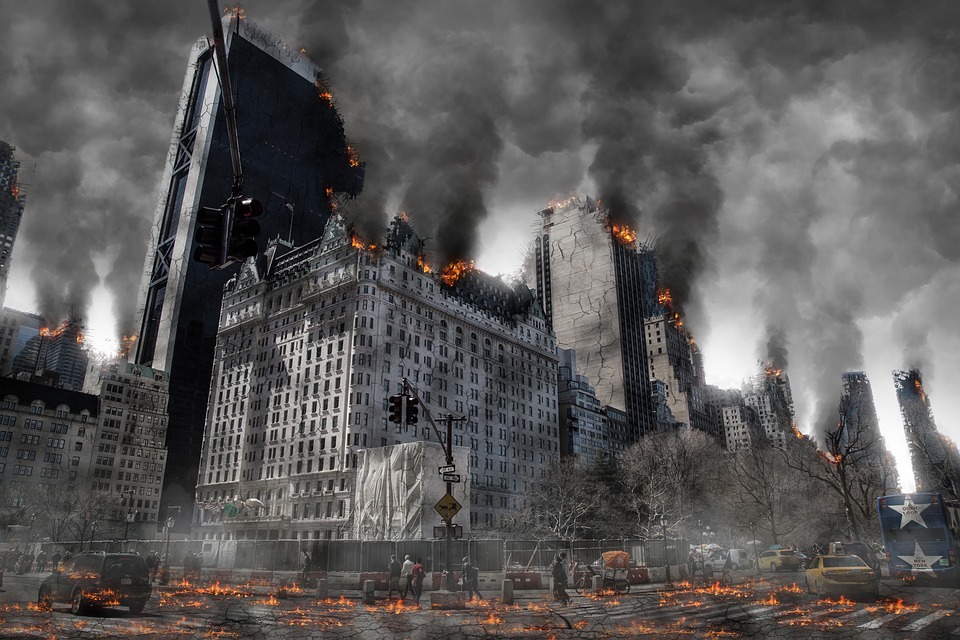
Whether we’re talking about food, water, or off-grid showering equipment, these are all items that can serve their purpose under a wide variety of conditions.
So, stock up and be ready because you never when disaster can strike.
How would you survive a nuclear event? Let us know in the comments below! Want to start prepping? Check out Prepping 101 for all the details you need to know as a beginner, or get more survival advice from our long list of survival-related articles here!


![[How-To] Survive a Nuclear Attack & Fallout](https://globalordnancenews.com/wp-content/uploads/2022/10/apocalypse-city-6Vng5T-696x464.jpeg)
